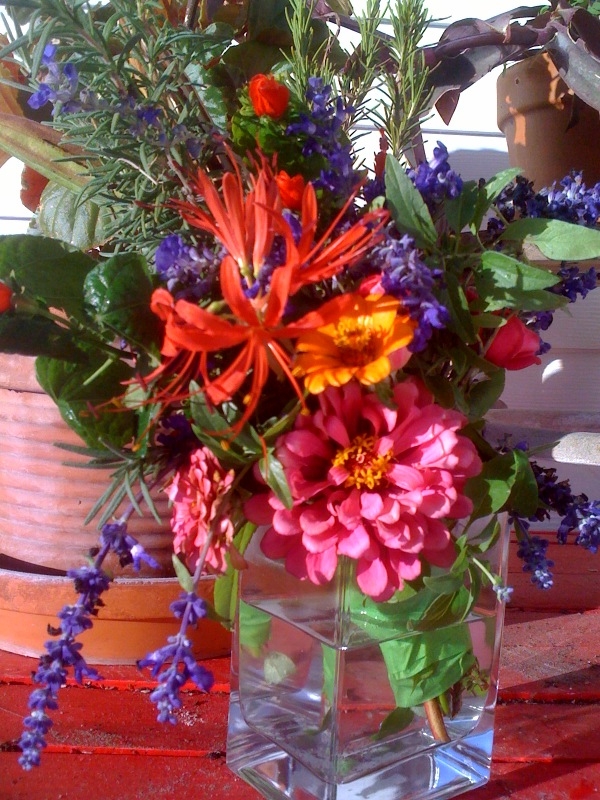August 15 is right around the corner. Why do I mention that? Well, it is the first planting date for the fall garden. We are truly lucky to be able to garden in the fall. If you have never had a fall garden I highly recommend it. Fall temperatures make it much more comfortable to be outside. Bug and weed problems are greatly reduced and you can grow a wide variety of vegetables (some that will continue producing until you remove them to make room for the Spring garden). It is also the best time of the year to plant (or move) trees and shrubs.

Our friend Amy Hime captured this beautiful Texas sunset. Right now it is so hot I wait until about this time each evening to go into the garden!
Vegetables
- Begin planning the fall garden– My friend and co-blogger Patty Leander creates the planting guides for the Travis County Texas A&M AgriLife Extension service. If you are wondering what to plant for the fall garden, check out her guide. Not only will it tell you what and when to plant, it will give you some ideas of different vegetables that do well in our area that you may not have tried before. Check out the guide here: Travis County Texas A&M AgriLife Extension Vegetable Planting Guide
- Solarize nematodes-Nematodes plague many of the plants we grow in Texas. Patty has a great post coming out this weekend about controlling them. One of her tips is to turn up the soil in your infected areas and let the July and August sun rid you of some future problems.
- Mulch and water – Lots of veggies like melons, southern peas and okra are still producing. Producing vegetables need lots of water. Mulch them heavily now then water early in the morning or late in the evening to reduce water lost to evaporation.

Love this shot of our red bird house on our redbud in front of our red garage door. Photo by Amy Hime
Ornamentals
- Remove “buggy” plants – My marigolds have been good this year and so have my gomphrena. However, they are now beginning to succumb to spider mites. Remove these plants and throw them away. Do not put them on the compost pile.
- Weed beds thoroghly and re-mulch – The heat is slowing down the growth of many of our invasive weeds. Pull them now and mulch heavily to prepare for your fall plantings
- It is not too late to replant zinnias, cockscomb, sunflowers and gomphrena from seeds.
Trees and Lawns
- Do not fertilize lawns until the temperatures come down a bit.
- Let grass grow as high as you can stand it. A thick carpet keeps roots cool and actually helps to conserves water
I share these posts on Our SimpleHomestead Blog Hop. Be sure to stop by. The “hop” has tons of great information from gardeners and homesteaders all over the world!
























